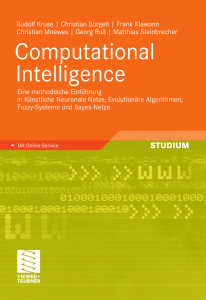Based on work by Christoph Reichert (diploma thesis, computer science) and his supervisor Jochem Rieger who works at the neuroscience school of the medical department, they seem to advance towards a certain cooperation between neuroscience and computer science. In a typical neurological experiment, a subject is presented a stimulus (an image) and he has to choose if he will recognize that particular image later on. During this time, his brain’s activity is recorded using MEG with high spatial (i.e. loads of sensors) and high temporal resolution. This activity is made accessible to a computer scientist using MatLab.
First, the task is to predict, from brain activity only, whether the subject will recognize the image or not. Due to the high dimensionality of the data, this classification (yes/no) will be performed by an SVM. From the SVM (or its separating hyperplane) the most significant activity that lead to the choice of the classification plane can be obtained. Therefore, the classifier contributes to understanding which part of the brain is the most active or most relevant for the given task. Furthermore, a transformation from the spatial to the frequency domain using wavelets showed some more interesting, additional results.
This work will be continued and the results so far look very promising.
